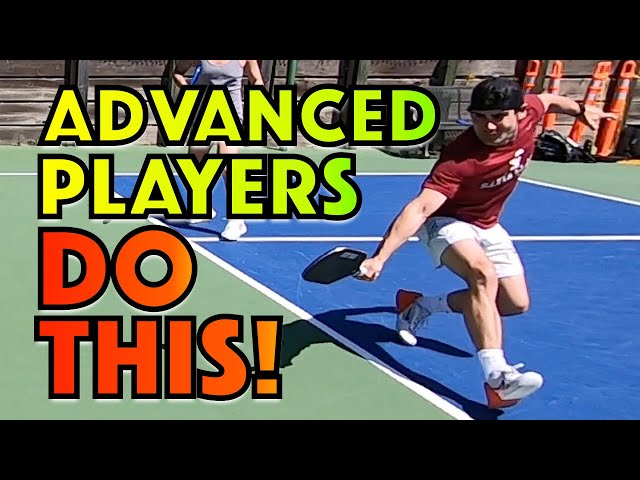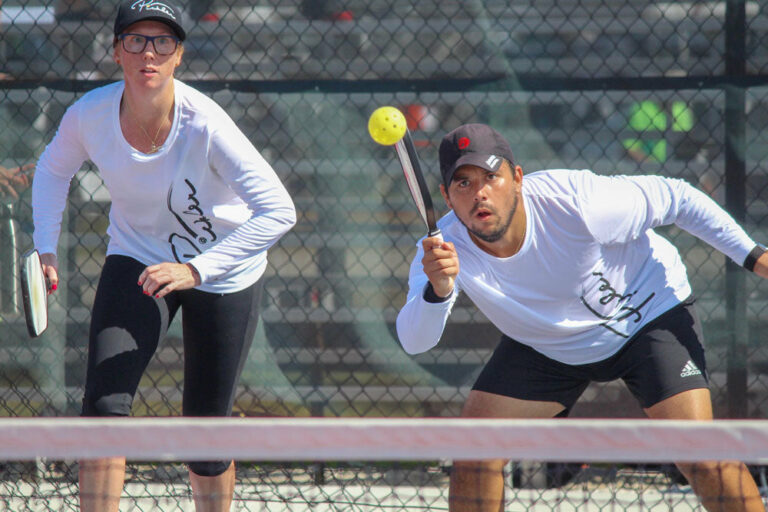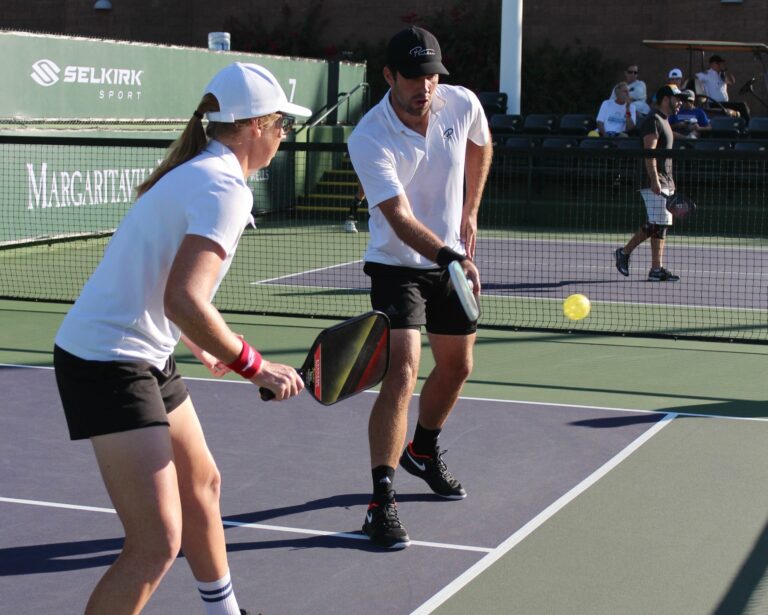Advanced pickleball strategy: Mastering the nuances for a competitive edge
Understanding advanced pickleball strategy is essential for players looking to elevate their game to the next level. Generally perceived as an easy-going sport, pickleball becomes increasingly complex as players grow more skilled. Advanced strategies involve a blend of tactical positioning, shot selection, and psychological warfare to outmaneuver opponents. As the dynamics of a match unfold, employing various techniques such as dinks, drop shots, and spin serves can turn the tide in your favor. Whether you’re striving to dominate in singles or collaborate effectively in doubles, grasping these advanced methodologies will immensely improve your chances of success. This article will delve deep into multiple aspects of advanced pickleball strategy, covering specific techniques, positioning approaches, offensive maneuvers, and mental strategies that seasoned players can adapt to their gameplay.
Understanding Advanced Pickleball Strategy
To excel in advanced pickleball strategies, players must first focus on understanding the nuances of various techniques. Dinking, for instance, requires finesse and precision, while drop shots are all about placement and timing. When executed well, these shots can force opponents into making errors or create openings for aggressive follow-ups. It is not just about power; the subtlety involved in the placement and spin of shots often dictates the flow of the game.

Elements of Advanced Dink Strategies
At its core, the dink is a tactical shot that can dictate the tempo of the game. Mastering the dink involves mastering several elements:
- Precision and Placement: A well-placed dink targets the opponent’s feet or challenging angles, making it hard for them to counter it’s like planting a seed of doubt in their game.
- Variability:
- The ability to mix spins, speed, and angles keeps opponents guessing. For example, switching from a slow, high dink to a quick drive can disrupt the rhythm of the game.
- Players can alternate between high, soft dinks and aggressive, fast dinks, creating unpredictable patterns.
- Court Positioning:
- Effective dinking requires players to stay close to the net, maximizing reach and response time.
- Being aware of court dynamics enables players to anticipate and effectively counter their opponent’s plays, similar to how a seasoned chess player reads the board.
- Exploiting Opponent Weaknesses:
- Recognizing opponents’ weak spots, like a precarious backhand, allows players to target those vulnerabilities strategically.
- By forcing opponents to respond from an uncomfortable position, players can seize the opportunity for an offensive shot once they’ve shifted the dynamics.
Using the above elements strategically can make a significant difference in the outcome of a match. A solid grasp of dink strategies allows advanced players to control the game from the get-go.
Mastering Drop Shots for Advantage
The drop shot is a formidable weapon in a pickleball player’s arsenal. When executed correctly, it lands softly in the opponent’s non-volley zone, often leading to easy follow-up shots. Mastering drop shots involves:

- Technique and Execution:
- Grip and Positioning: Utilize a continental grip for versatility and stand with proper body positioning to maximize reach and balance during execution.
- Timing: Strike the ball as it descends for an optimal trajectory.
- Types of Drop Shots:
- Players can successfully use various drop shots, including the angle drop and cross-court drop, effective against opponents who stand too far back.
- Strategic Use:
- When opponents are positioned far from the net, a well-executed drop shot draws them closer, creating opportunities for more aggressive shots.
- Pairing drop shots with other styles, like dinking or lobbing, diversifies the attack and keeps opponents on their toes.
- Psychological Tactics:
- The drop shot can manipulate an opponent’s positioning and mindset, encouraging them to take risks that may lead to errors.
By honing these aspects of the drop shot, players can effectively turn the game in their favor, foreshadowing offensive opportunities for future plays.
Utilizing Spin Serves Effectively
Mastering spin serves can be highly advantageous in pickleball. When used well, spin can disrupt the rhythm of an opponent’s game, making it harder for them to respond:
- Understanding Spin:
- Players must understand the mechanics behind different types of spin serves, including topspin and sidespin. Each alters the trajectory and bounce of the ball, complicating returns.
- Techniques for Spin Serves:
- Employ a low-to-high swing motion to impart topspin, causing the ball to dip quickly upon landing. This creates tension as opponents scramble to respond effectively.
- Sidespin serves can deceive opponents, changing the ball’s path post-bounce, emphasizing the importance of shot placement.
- Strategic Application:
- Utilizing spin serves keeps opponents off-balance. Players can alternate between spins and varying speeds, increasing the likelihood of forced errors from their opponents.
- Pairing serves with strong follow-ups can lead to quick rallies or dominant points.
By embedding spinning techniques into their gameplay, players can enhance their competitive edge and seize control of rallies.
Tactical Approaches to Court Positioning
Court positioning plays a crucial role in advanced pickleball strategies, directly impacting both defensive and offensive capabilities.

Importance of Central Positioning
- Maximized Coverage: Positioning centrally allows players to cover the court efficiently. By being nearer to the middle, players can swiftly react to both forehand and backhand shots, akin to a goalie in soccer ready to block either direction.
- Control and Anticipation:
- Central positioning enhances a player’s ability to anticipate opponents’ moves. Being in the middle allows for quicker responses to upshot threats.
- It also applies pressure, making opponents think twice about shot selection.
- Facilitating Teamwork in Doubles:
- Central positioning fosters better communication and teamwork. Dual players strategically positioned in the center can efficiently execute team plays and control the court space.
Adjusting Position Against Opponent Styles
- Mindful Court Positioning:
- Constantly adjust your placement by analyzing your opponent’s strengths and weaknesses. This strategic awareness allows you to pivot effectively during gameplay a fluid act reminiscent of a dancer flowing gracefully across the floor.
- Manipulator Positioning:
- Use your knowledge of your opponent’s preferred styles and shot types to dictate your own positioning during the match. For instance, if an opponent excels at aggressive power plays, position yourself to return with controlled dinks, limiting their options.
- Communication in Doubles:
- Effective communication with your partner is fundamental. Awareness of each other’s court coverage reduces the likelihood of overlaps and gaps, ensuring a comprehensive approach to opponent pressure.
Offensive Strategies for Competitive Play
In competitive play, offensive strategies hinge upon coordination and adaptability based on your opponents’ weaknesses. This requires proactive thought alongside technical execution.
Developing a Versatile Attack Arsenal
- Diverse Shot Selection:
- Incorporating various shots is essential for keeping your attacking style unpredictable just as a painter uses different colors to create a masterpiece. Master the art of topspin drives, soft drops, and powerful lobs to keep your opponents guessing.
- Topspin Mastery:
- Players should practice imparting topspin on their shots, making it harder for opponents to a) return the ball effectively and b) anticipate the ball’s trajectory upon bounce. This technique adds depth to your offensive skills, applying pressure during exchanges.
- Adapting to Opponents’ Weaknesses:
- Observing habits and tendencies allows you to exploit vulnerabilities effectively. Whether a player consistently falters against drop shots or struggles with their backhand, targeting specific weaknesses can turn the flow of the match in your favor.
Exploiting Gaps in Opponents’ Formation
- Identifying Gaps:
- Target the space between opponents to broke down their communication and coordination. An effective gap shot can disrupt your opponents’ formation, forcing them to scramble and react.
- Application Techniques:
- Serve deep and mix shot types to push opponents back, creating space and opportunistic openings. Lateral movements can also enhance your ability to find gaps as the rally progresses.
- Quick Reflexes at the Net:
- Train to respond quickly, maintaining a strong stance near the net and being ready to intercept powerful exchanges. Those split-second decisions at the net can lead to significant points.
Mental and Psychological Tactics
The mental side of pickleball cannot be overlooked; psychological warfare can often dictate the outcome of a match just as much as physical techniques.
Building Mental Toughness in Matches
- Focus and Visualization:
- Prepare mentally by visualizing success before matches, allowing confidence to overflow when it counts. A vivid mental picture of winning shots can significantly enhance actual performance.
- Pressure Simulation Practice:
- Experience simulated high-pressure situations during practice to enhance mental resilience. Facing tougher competition in drills allows players to acclimate to game-time pressure.
Pair Dynamics and Communication Strategies
- Establishing Roles:
- Clear communication with a partner is crucial for success in doubles. By defining specific roles based on strengths and weaknesses, players can improve cooperative dynamics and streamline decision-making.
- Middle Court Communication:
- Minimize errors resulting from hesitancy by establishing a clear understanding of shot responsibilities. Verbal cues such as “mine” and “yours” can significantly reduce confusion at pivotal moments.
- Emotional Regulation:
- Understanding emotional triggers and employing breathing techniques to manage stress is vital. Players who excel under pressure can use their wits to exploit opponents’ frailties.
Adapting Strategies During High-Stakes Play
- Observational Skills:
- Keen observation allows players to read opponents effectively. Analyzing shot patterns and physical movements informs strategic adjustments for more effective play.
- Team Chemistry:
- Building rapport with a partner enhances instinctive reactions during gameplay, leading to better performance and teamwork.
Drills and Practice for Advanced Players
Regular practice is key for refining advanced skills. Here are crucial drills to improve your performance further:
Targeted Drills for Mastering Serves and Returns
- Fireball Drill:
- Implements aggressive serves aimed directly at the receiver near the kitchen line. This drill fosters consistency and builds pressure during practice.
- Wall Drills for Shot Accuracy:
- Practicing against a wall sharpens shot placement skills while reinforcing touch.
- Split Step:
- Focus on maintaining proper foot movement just before your opponents strike to improve reaction time and positioning.
Advanced Footwork Techniques for Court Agility
- Ladder Drills:
- Enhance speed and agility with various foot patterns. Quick movements position players effectively to respond dynamically.
- Cone Drills:
- Sprint through arranged cones, simulating real-game scenarios that necessitate lateral and quick directional movements.
Analyzing Opponents’ Weaknesses
Analyzing opponents’ weaknesses is an ongoing and critical process:
Identifying and Exploiting Opponent Vulnerabilities
- Observation of Opponents Playstyle:
- Take note of movement patterns and preferred techniques available by observing competitor matches or practice sessions. Identifying these traits allows players to adapt their gameplay.
- Implementing Targeted Strategies:
- Once weaknesses are identified, formulate a plan to consistently target other players’ vulnerabilities, putting them under pressure and forcing mistakes.
- Recognizing Psychological Responses:
- Players must remain aware of how opponents react to pressure, using tactics to exploit signs of frustration or anxiety with targeted shots or strategic changes that disrupt rhythm.
Frequently Asked Questions
1. What is the most effective service in pickleball?
- The most effective serve often varies based on opponents. However, topspin serves are generally challenging to return due to their unpredictable bounce.
2. How can I improve my drop shot technique?
- Focus on grip, body positioning, and timing when executing drop shots. Regular practice and feedback from experienced players can yield substantial improvements.
3. What is the best strategy for dealing with aggressive opponents?
- Respond with controlled shots, dinks, and lobs to disrupt their rhythm while capitalizing on any weaknesses in shot selection.
4. How important is communication in doubles play?
- Extremely important! Effective communication minimizes errors and ensures partners understand their roles clearly during high-pressure moments.
5. Can mental toughness really impact a match?
- Yes, mental fortitude can keep players composed and focused under pressure, allowing for better strategic decision-making during matches.
Key Takeaways
- Mastering advanced pickleball strategies encompasses various techniques, positional approaches, and mental tactics.
- Key techniques include dinks, drop shots, and spin serves, each contributing to a player’s overall strategy.
- Effective court positioning and communication in doubles can significantly enhance performance.
- Analyzing opponents’ weaknesses allows players to adapt their gameplay successfully.
- Regular practice, mental preparation, and resilience are crucial for success in competitive play.
Conclusion
Advanced pickleball strategies hinge upon a refined understanding of various techniques and the dynamic nature of in-game interactions. Whether it’s strategic dinks to control pace, precise drop shots to catch opponents off guard, or effective communication in doubles, every facet contributes to competitive success. By embracing these pickleball strategies, players can navigate the complexities of advanced play, refine their skills, and gain the upper hand in their matches. Ultimately, mastering the intricate dance of strategy, technique, and mental strength ensures a higher level of play on the court transforming good players into great ones.
